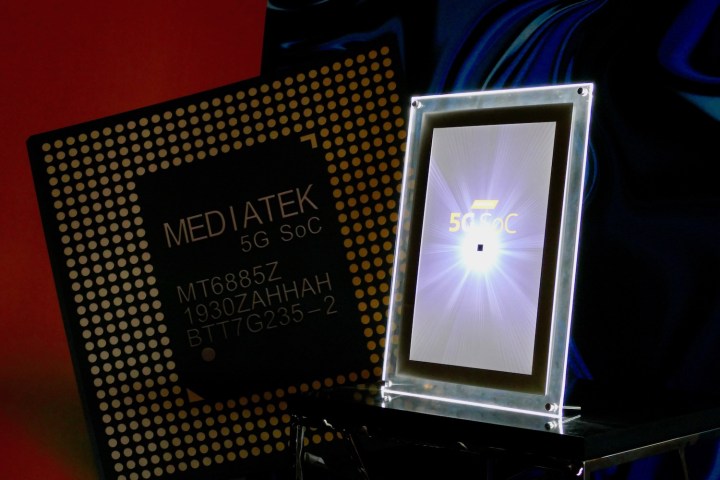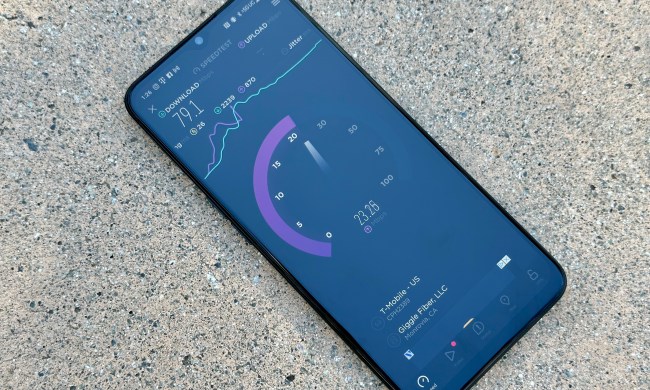
First announced in May 2019, MediaTek has now shared all the details about its groundbreaking 5G SoC, now called the Dimensity 1000, and it claims the tiny chip contains a massive variety of world-firsts. It’s also the beginning of a large-scale push into 5G for the reinvigorated MediaTek, which by its own admission didn’t quite capitalize on 4G. The impressive Dimensity 1000 shows it has no intention of making that mistake again.
Let’s talk about the world-firsts which MediaTek says are on display inside the 5G SoC. MediaTek compared its integrated 5G SoC to Qualcomm’s Snapdragon 855 with the X50 5G modem to come up with these claims, which when MediaTek tested it out, was the only other 5G Sub-6 chip game in town. There are quite a few, so a list will work best:
- World’s fastest Sub-6 5G SoC: Download speeds have reached 4.7Gbps, and uploads 2.5Gbps.
- World’s first mobile SoC with Sub-6 5G carrier aggregation: This means it has 30% wider 5G capacity coverage, so more 5G more of the time.
- World’s most power-efficient modem: It’ll draw 49% less power than the Qualcomm pairing in high-speed mode, or 42% less in connected mode.
- World’s first with 5G dual-sim support. Use two 5G SIM cards in the same phone.
- World’s first SoC with integrated Wi-Fi 6: Faster speeds, and a 40% power draw reduction compared to Wi-Fi 5.
- World’s first SoC with the Mali G77 GPU: The new graphics processor unit will return a 40% performance increase over the Mali G76.
That’s six main world-firsts inside the Dimensity 1000, according to the company and when compared to Qualcomm’s 855/X50 combination chip. The MediaTek chip integrates the 5G modem into the tiny system-on-a-chip, but is not compatible with mmWave 5G connections, it’s only for Sub-6 connections used by carriers like T-Mobile and Sprint in the U.S., plus all networks in the U.K. and China.

What else? The Dimensity 1000 has the most complete lineup of navigation satellite support, including GPS, Galileo, Japan’s QZSS, and China’s Beidou satellites, plus artificial intelligence for scene detection on the display, A.I.-enhanced HDR, multiframe HDR on video, a four-core audio system, a 3-core ISP for the camera, 4K 60 fps support, up to 80-megapixel camera sensor support, and support for 90Hz QHD-resolution screens too.
That’s all before we restate the MediaTek Dimensity 1000 is based on the very latest ARM Cortex A77 architecture, and the octa-core layout consists of four A77 cores running at 2.2GHz and four A55 cores running at 2.0GHz. The Accelerated Processing Unit has a five core layout, with two big cores, two little cores, and a single tiny core. MediaTek told assembled press at its recent Summit in San Diego, California that the 5G SoC represented, “a lot more than just integrating a new modem,” and seeing the final spec it’s hard to disagree.
The 5G SoC is already in the hands of manufacturers, and the first devices with the chip will be out during the first three months of 2020. Initially, these will be sold in China, but the U.S. and Europe will see Dimensity 1000 phones during the second half of the year. Although aimed at high-end smartphones, MediaTek’s focuses on providing premium experiences inside devices that don’t command premium prices. MediaTek works with manufacturers including Sony, Amazon, Xiaomi, Oppo, and LG.



